 Java
Java
 javaTutorial
javaTutorial
 Detailed graphic and text explanation of Java Web project created using IntelliJ IDEA 15 and Maven
Detailed graphic and text explanation of Java Web project created using IntelliJ IDEA 15 and Maven
Detailed graphic and text explanation of Java Web project created using IntelliJ IDEA 15 and Maven
This article mainly introduces the use of IntelliJ IDEA 15 and Maven to create Java Web projects (pictures and texts). It has certain reference value. Interested friends can refer to
1. Introduction to Maven
Compared with traditional projects, projects managed and built under Maven are really easy to use and simple, so it is also emphasized here that you should try to use such tools for project construction. It can manage The entire life cycle of the project.
You can do all related work through its commands. The commonly used commands are as follows:
- mvn compile
- mvn test
- mvn clean
- mvn package
- mvn install //Put the new The created jar package is installed into the warehouse
- mvn archetype:generate //Create a new project
This article is mainly demonstrated in IntelliJ How to configure and use IDEA in the IDE environment.
2. Configure Maven
The software can be configured once and shared by all Maven projects.
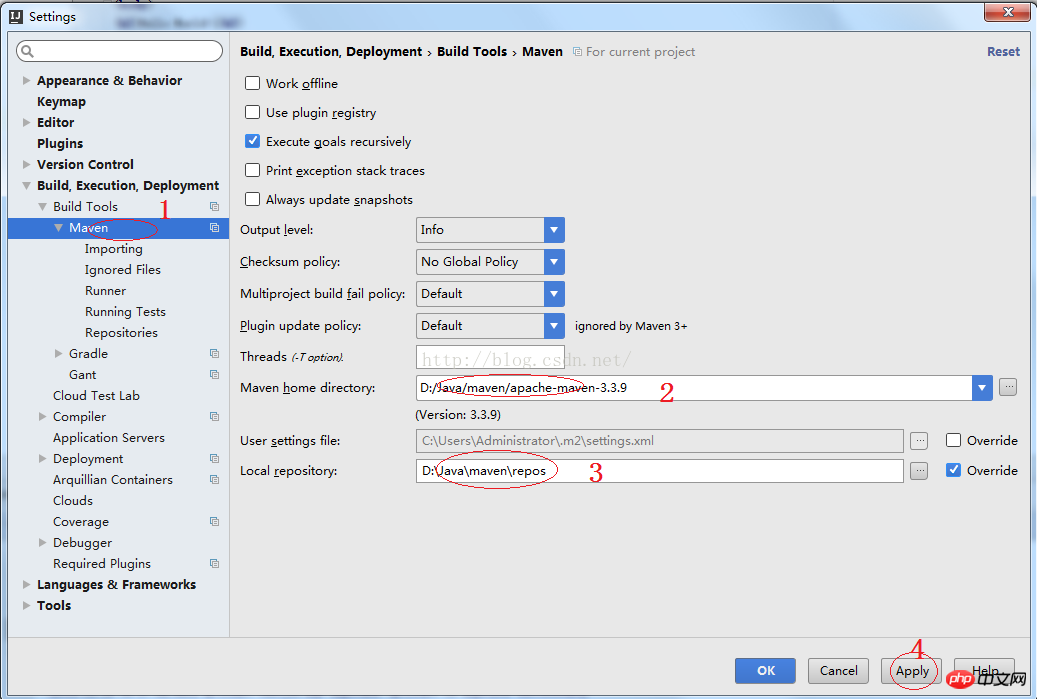
1) Select your own warehouse as shown in note 3 in the above figure
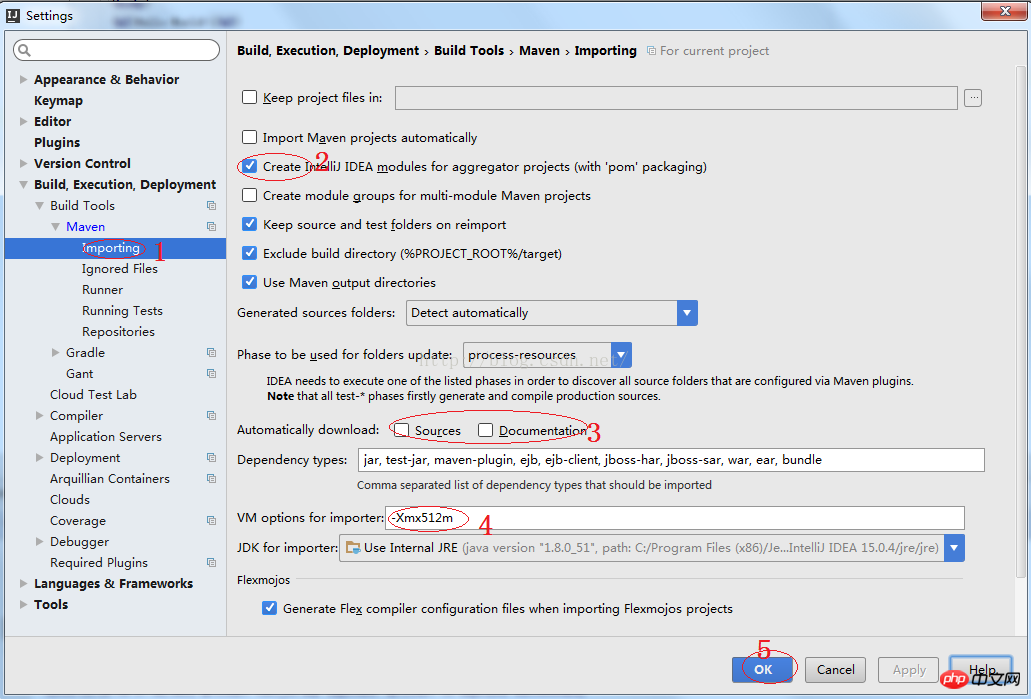
1) As shown in note 2 in the above figure, Import Maven projects automatically means that IntelliJ IDEA will monitor the project's pom.xml file in real time and make project change settings.
2) As shown in note 3 in the figure above, whether to automatically download source code and documents when Maven imports dependent packages. It is not checked by default, and it is not recommended to check it. The reason is that it can speed up the project to import dependency packages from the external network. If we need source code and documents, we can download a certain dependency package online at that time. . IntelliJ IDEA supports downloading source code and documents directly from the public network.
3) As shown in note 3 in the above figure, the imported VM parameters can be set. Generally, there is no need to actively change this. Unless the project is really imported too slowly, we can increase this parameter.
3.Maven skeleton creates Java Web project
1) File -> New -> Project...
2) As shown below
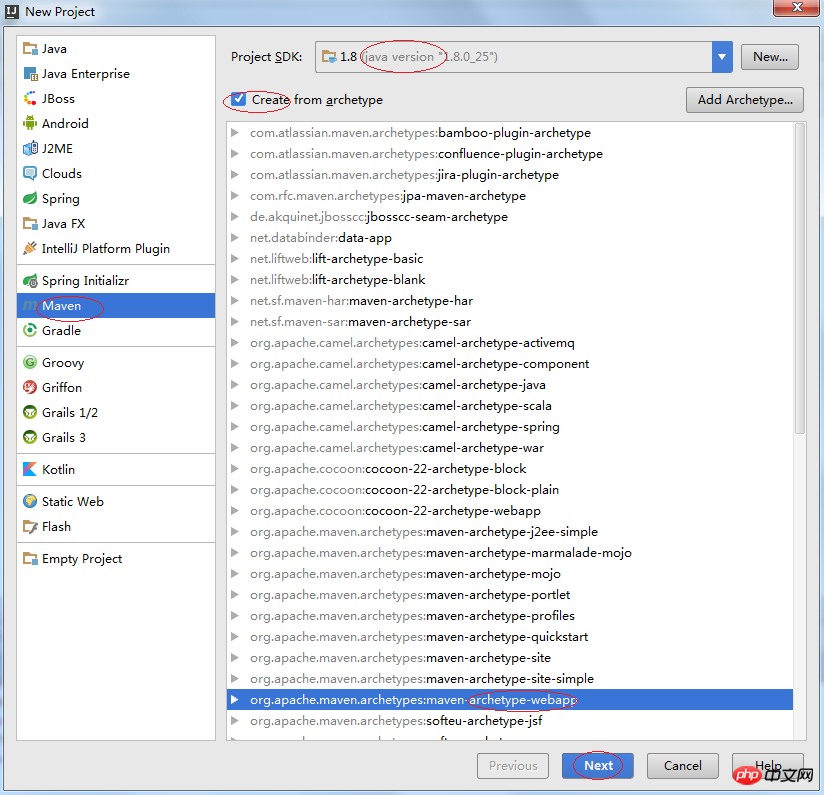

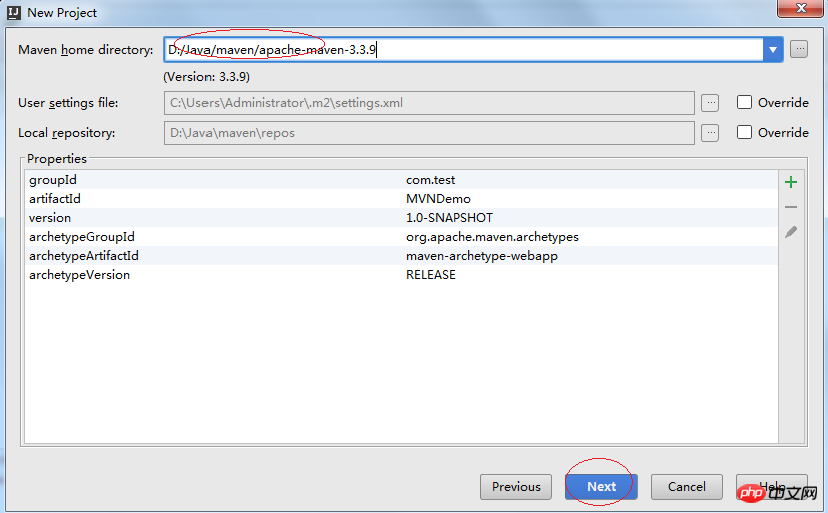
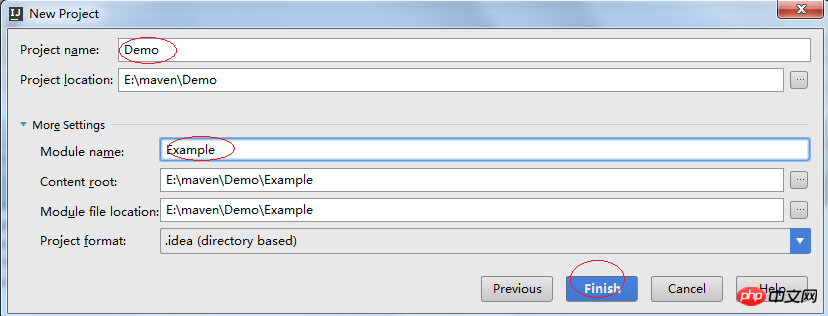

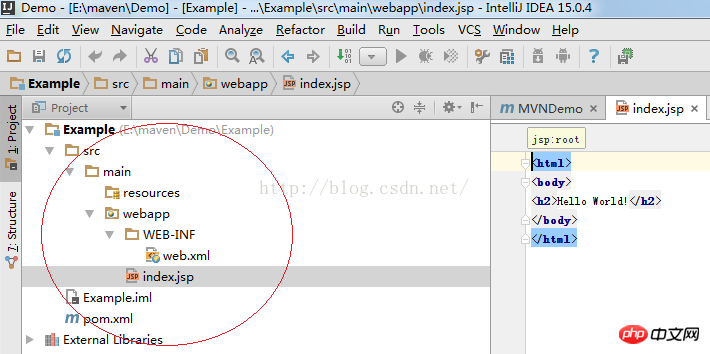
4. Start the Java Web project
1) Open "Project Structure"
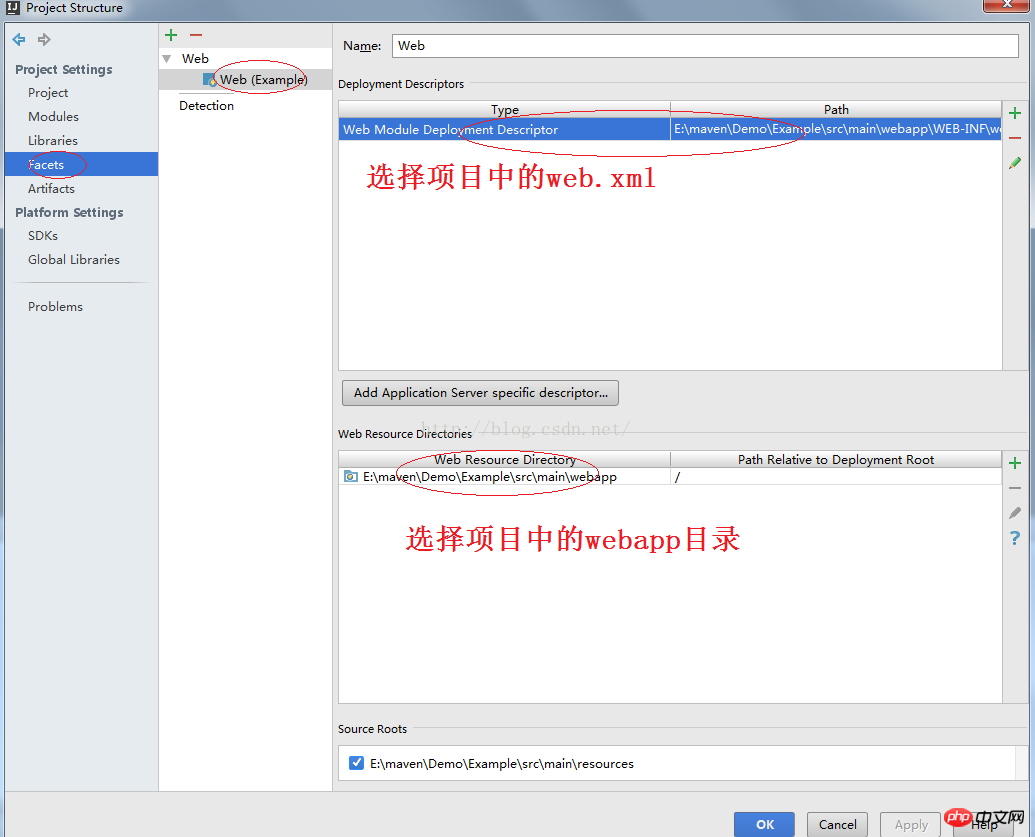
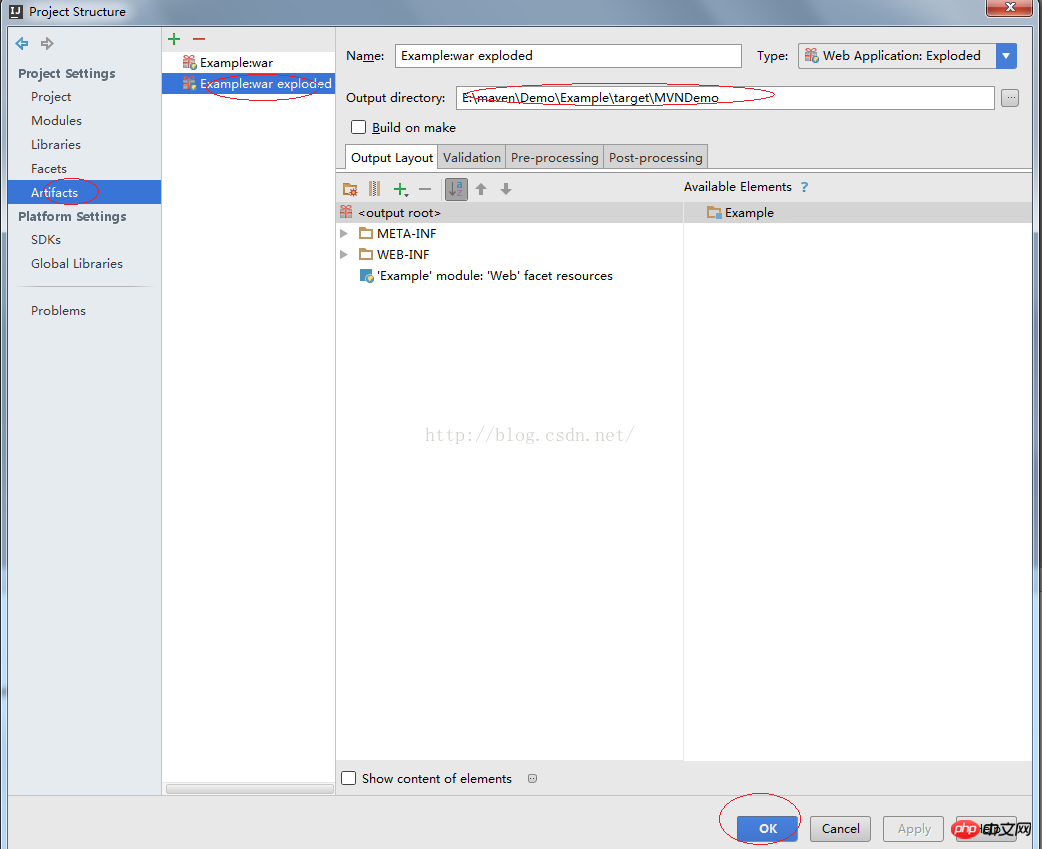

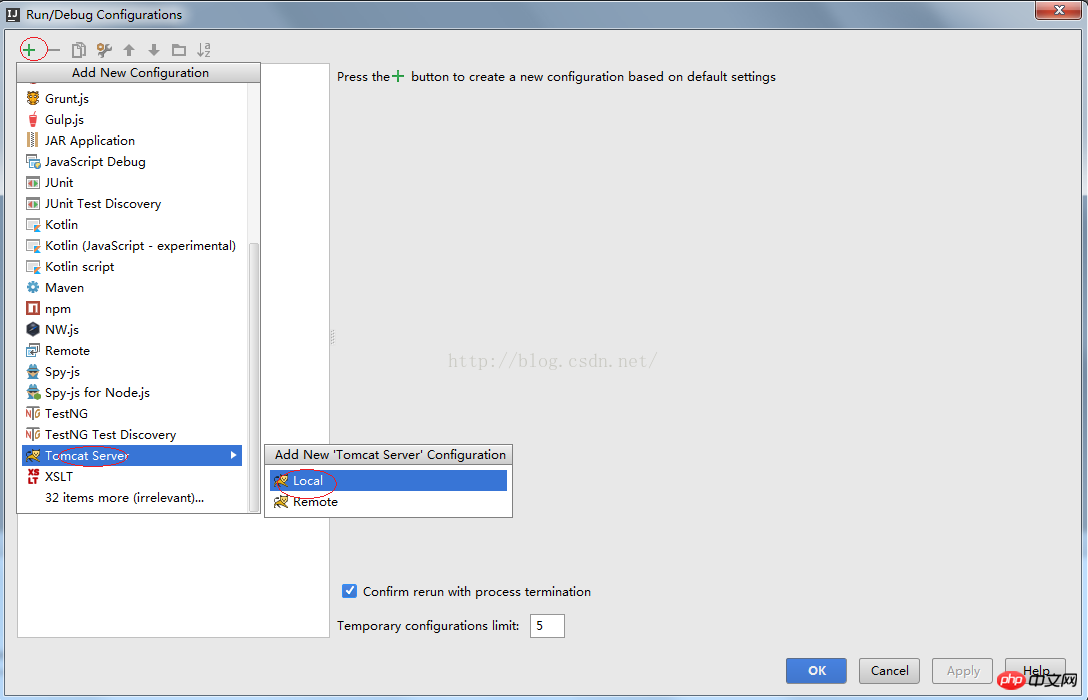

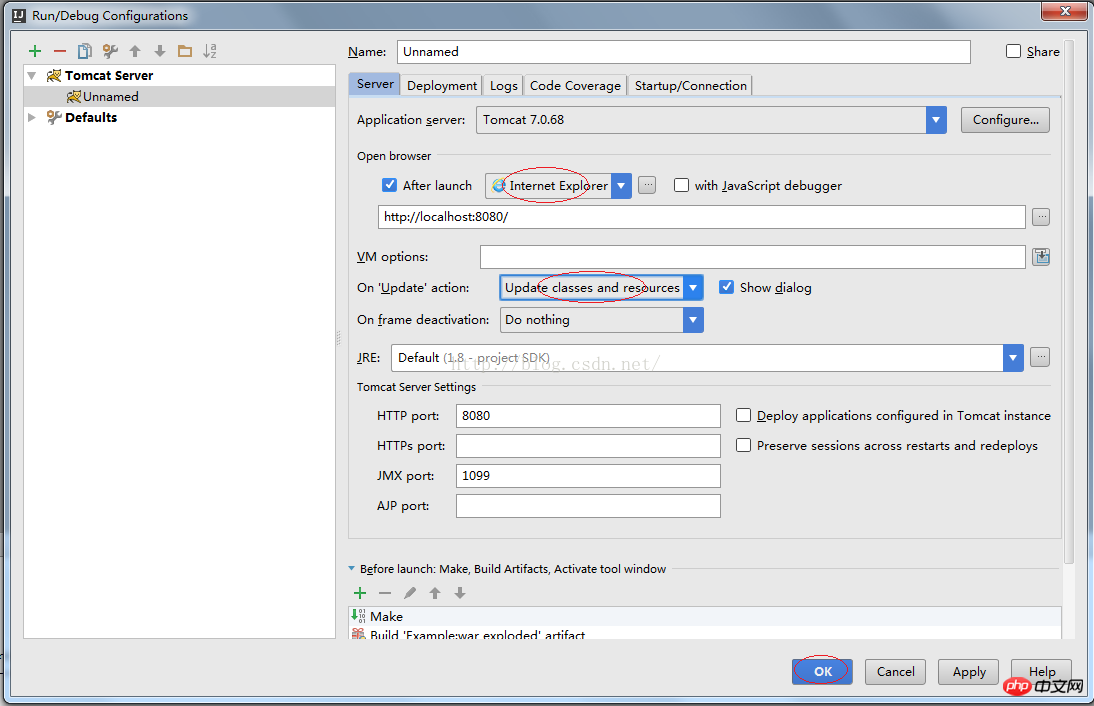
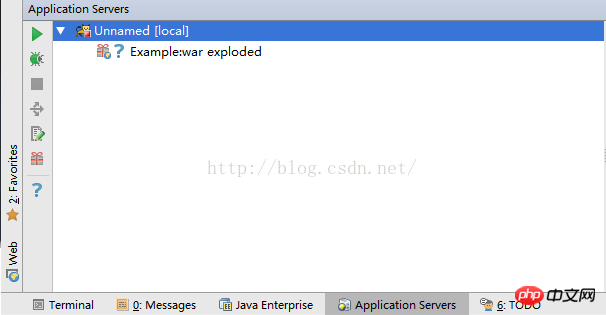

5. Deploy the war file in Tomcat
1) Copy MVNDemo.war to the webapps directory of Tomcat.2) Visit the URL on the Browser: http://localhost:8080/MVNDemo/.
6. Create Java program directory
1) Create java directory
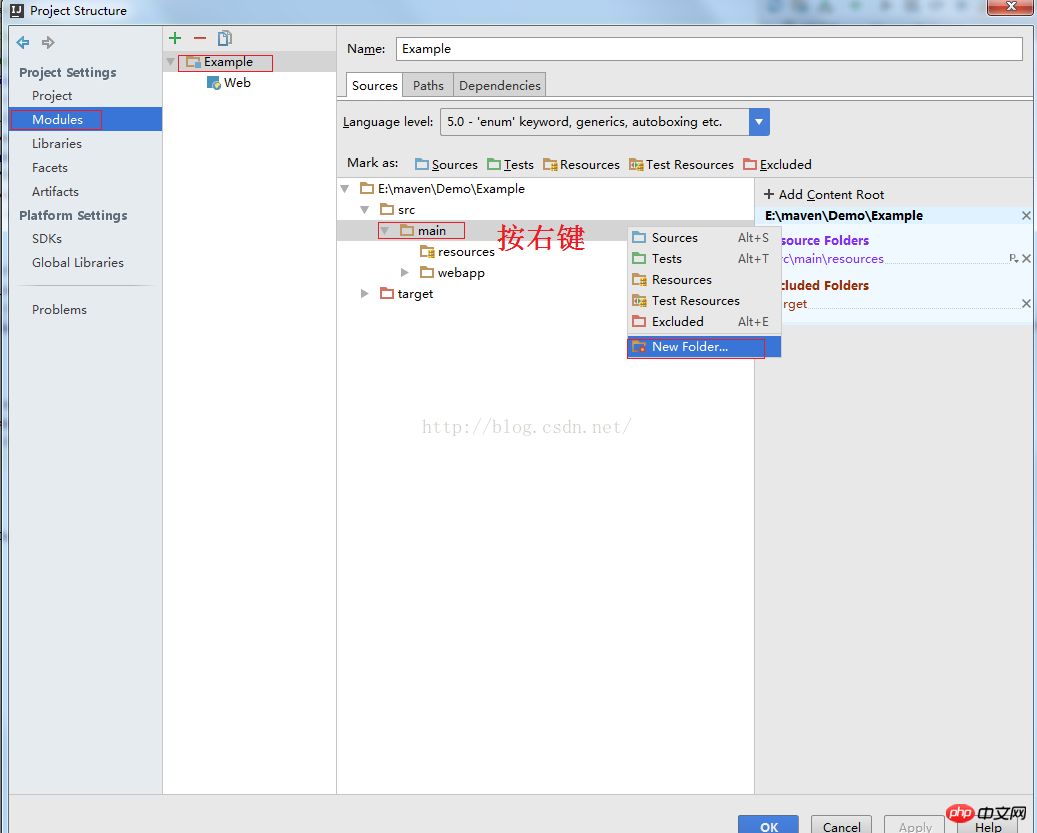
2) Set the java directory Select the java folder for Sources
, click Make as: Sources above, the folder will turn blue to save the java code, press OK.
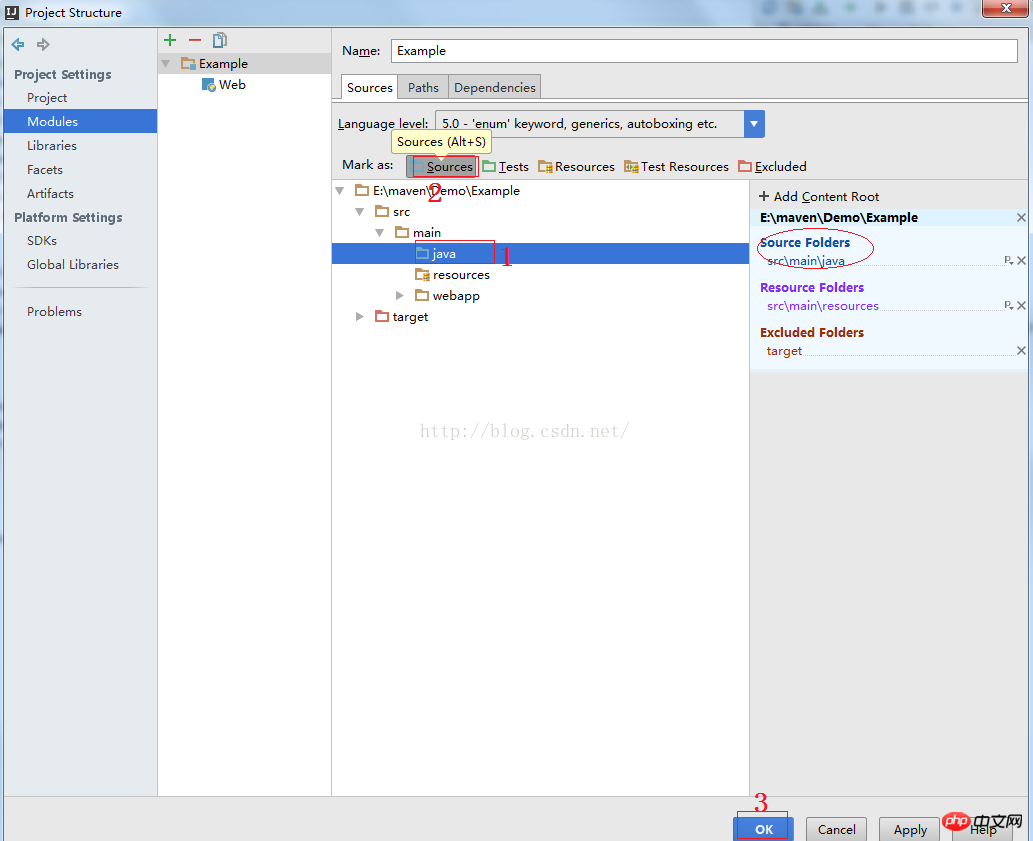
The above is the detailed content of Detailed graphic and text explanation of Java Web project created using IntelliJ IDEA 15 and Maven. For more information, please follow other related articles on the PHP Chinese website!

Hot AI Tools

Undresser.AI Undress
AI-powered app for creating realistic nude photos

AI Clothes Remover
Online AI tool for removing clothes from photos.

Undress AI Tool
Undress images for free

Clothoff.io
AI clothes remover

Video Face Swap
Swap faces in any video effortlessly with our completely free AI face swap tool!

Hot Article

Hot Tools

Notepad++7.3.1
Easy-to-use and free code editor

SublimeText3 Chinese version
Chinese version, very easy to use

Zend Studio 13.0.1
Powerful PHP integrated development environment

Dreamweaver CS6
Visual web development tools

SublimeText3 Mac version
God-level code editing software (SublimeText3)

Hot Topics
 Break or return from Java 8 stream forEach?
Feb 07, 2025 pm 12:09 PM
Break or return from Java 8 stream forEach?
Feb 07, 2025 pm 12:09 PM
Java 8 introduces the Stream API, providing a powerful and expressive way to process data collections. However, a common question when using Stream is: How to break or return from a forEach operation? Traditional loops allow for early interruption or return, but Stream's forEach method does not directly support this method. This article will explain the reasons and explore alternative methods for implementing premature termination in Stream processing systems. Further reading: Java Stream API improvements Understand Stream forEach The forEach method is a terminal operation that performs one operation on each element in the Stream. Its design intention is
 PHP: A Key Language for Web Development
Apr 13, 2025 am 12:08 AM
PHP: A Key Language for Web Development
Apr 13, 2025 am 12:08 AM
PHP is a scripting language widely used on the server side, especially suitable for web development. 1.PHP can embed HTML, process HTTP requests and responses, and supports a variety of databases. 2.PHP is used to generate dynamic web content, process form data, access databases, etc., with strong community support and open source resources. 3. PHP is an interpreted language, and the execution process includes lexical analysis, grammatical analysis, compilation and execution. 4.PHP can be combined with MySQL for advanced applications such as user registration systems. 5. When debugging PHP, you can use functions such as error_reporting() and var_dump(). 6. Optimize PHP code to use caching mechanisms, optimize database queries and use built-in functions. 7
 PHP vs. Python: Understanding the Differences
Apr 11, 2025 am 12:15 AM
PHP vs. Python: Understanding the Differences
Apr 11, 2025 am 12:15 AM
PHP and Python each have their own advantages, and the choice should be based on project requirements. 1.PHP is suitable for web development, with simple syntax and high execution efficiency. 2. Python is suitable for data science and machine learning, with concise syntax and rich libraries.
 PHP vs. Other Languages: A Comparison
Apr 13, 2025 am 12:19 AM
PHP vs. Other Languages: A Comparison
Apr 13, 2025 am 12:19 AM
PHP is suitable for web development, especially in rapid development and processing dynamic content, but is not good at data science and enterprise-level applications. Compared with Python, PHP has more advantages in web development, but is not as good as Python in the field of data science; compared with Java, PHP performs worse in enterprise-level applications, but is more flexible in web development; compared with JavaScript, PHP is more concise in back-end development, but is not as good as JavaScript in front-end development.
 PHP vs. Python: Core Features and Functionality
Apr 13, 2025 am 12:16 AM
PHP vs. Python: Core Features and Functionality
Apr 13, 2025 am 12:16 AM
PHP and Python each have their own advantages and are suitable for different scenarios. 1.PHP is suitable for web development and provides built-in web servers and rich function libraries. 2. Python is suitable for data science and machine learning, with concise syntax and a powerful standard library. When choosing, it should be decided based on project requirements.
 Java Program to Find the Volume of Capsule
Feb 07, 2025 am 11:37 AM
Java Program to Find the Volume of Capsule
Feb 07, 2025 am 11:37 AM
Capsules are three-dimensional geometric figures, composed of a cylinder and a hemisphere at both ends. The volume of the capsule can be calculated by adding the volume of the cylinder and the volume of the hemisphere at both ends. This tutorial will discuss how to calculate the volume of a given capsule in Java using different methods. Capsule volume formula The formula for capsule volume is as follows: Capsule volume = Cylindrical volume Volume Two hemisphere volume in, r: The radius of the hemisphere. h: The height of the cylinder (excluding the hemisphere). Example 1 enter Radius = 5 units Height = 10 units Output Volume = 1570.8 cubic units explain Calculate volume using formula: Volume = π × r2 × h (4
 PHP: The Foundation of Many Websites
Apr 13, 2025 am 12:07 AM
PHP: The Foundation of Many Websites
Apr 13, 2025 am 12:07 AM
The reasons why PHP is the preferred technology stack for many websites include its ease of use, strong community support, and widespread use. 1) Easy to learn and use, suitable for beginners. 2) Have a huge developer community and rich resources. 3) Widely used in WordPress, Drupal and other platforms. 4) Integrate tightly with web servers to simplify development deployment.
 Create the Future: Java Programming for Absolute Beginners
Oct 13, 2024 pm 01:32 PM
Create the Future: Java Programming for Absolute Beginners
Oct 13, 2024 pm 01:32 PM
Java is a popular programming language that can be learned by both beginners and experienced developers. This tutorial starts with basic concepts and progresses through advanced topics. After installing the Java Development Kit, you can practice programming by creating a simple "Hello, World!" program. After you understand the code, use the command prompt to compile and run the program, and "Hello, World!" will be output on the console. Learning Java starts your programming journey, and as your mastery deepens, you can create more complex applications.





